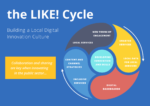Covid-19: The 3 Types Of Post-lockdown Retailers

Now that retailing in the UK is starting to open up, we can break retailers into three groups – two you should support and one you should avoid.
Posts from dere-street on innovation, on programme management, on research management, on cities and Smart Cities, on retailing, and on European projects.
You can also jump directly to the Case Study archive, or the Resources archive.

Now that retailing in the UK is starting to open up, we can break retailers into three groups – two you should support and one you should avoid.

We are starting to see some v. small changes in how transportation is changing in Covid-19 Scotland thanks to Spaces for People. What we don’t know (yet) is how much of the funding is going to benefit pedestrians/walkers.

See a video intro to the set of magazines I wrote earlier this year that capture everything that the LIKE! project has learned about accelerating innovation and building capacity by developing ‘innovation cultures’.

I developed the ‘LIKE Cycle’ as an iterative model for capacity development and innovation that builds upon everything we’ve learned delivering the LIKE! project. The LIKE Cycle is a both a pathway for individual and organisational skills development, and a roadmap for service innovation and development.

There’s a real expectation that cities and municipalities will be innovative – almost by default. Innovation requires skilled staff and a flexible organisation, so Like! explored ways to develop organisations to embed innovation in how they work and in how they design and improve services.

LIKE’s Smarter Services work developed new ways of working with citizens and service users to use data and information to complement efforts to co-design better services. There were three themes: 1) Data for Smarter services, 2) Local services, and 3) Channel and content strategies

LIKE! has been developing new ways for cities and communities to use data – to design and deliver better services, and to make better policy decisions for communities.
The ‘Creating Digital DNA’ work in LIKE! has focused on 3 areas: 1) Digital dashboards, 2) Local data for local services, and 3) the Internet of things (IoT).

Learn how BLING (Blockchain in Government) plans to accelerate and de-risk the development and deployment of blockchain-enabled e-services in the North Sea Region of Europe.

A key risk faced by many projects is they didn’t make sure that they had enough staff to deliver what they promised.
I’ll tell you why this is such a big deal to funders and managers, and how you can change your approach to better manage this risk.
Funding is available for NHS Scotland Health Boards to trial the PROMs & PREMs innovations supported by the Cancer Innovation Challenge. Learn more and how to apply.

BLING – BLockchain in Government – is a €5M collaboration of 13 organisations – governments, cities and universities – who are exploring how governments can use blockchain to enable the next generation of smart services.

Key lessons in how to structure a high-risk project that keeps funders happy and give you flexibility in managing innovation programmes.